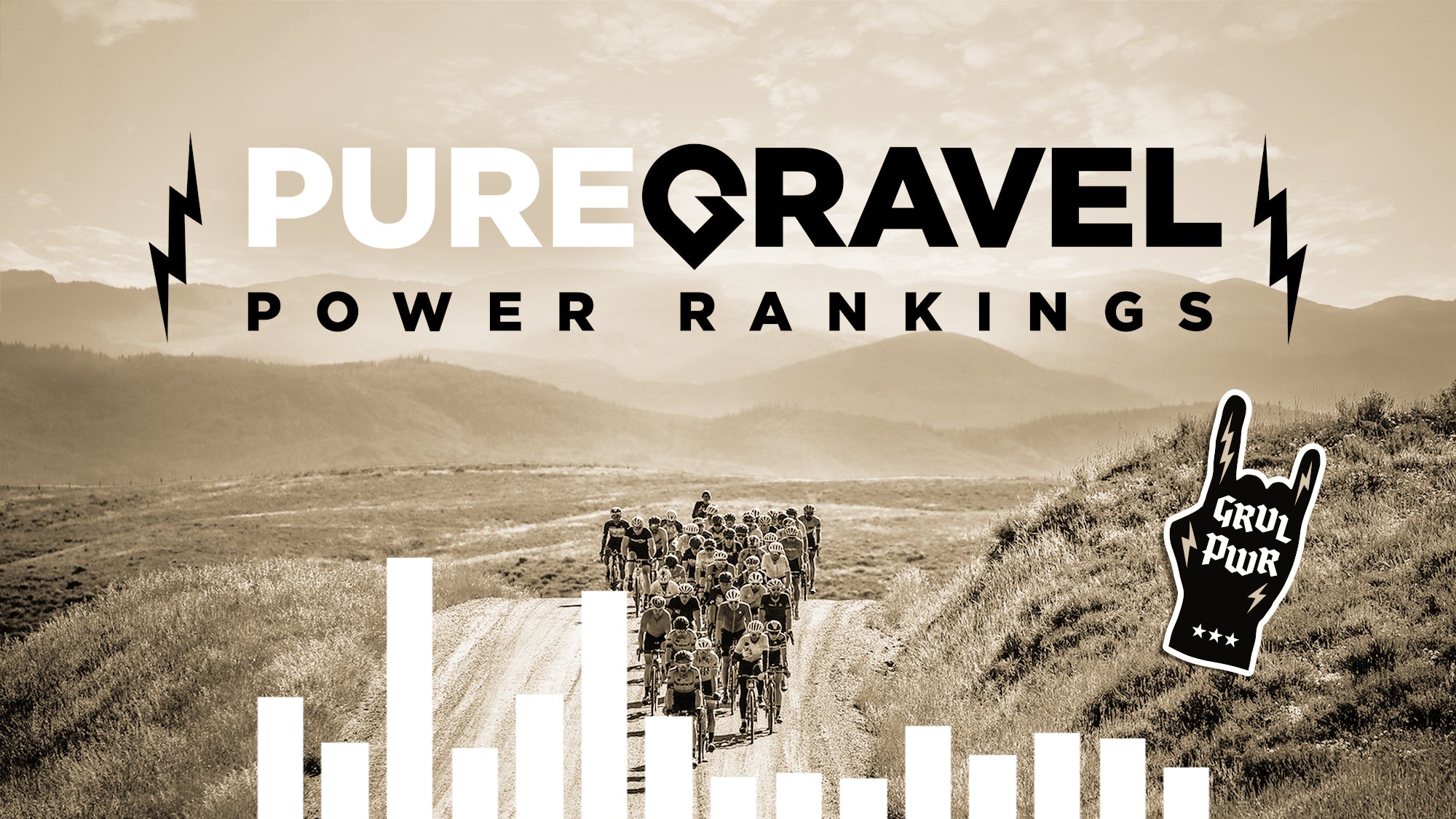Your Cart is Empty

WHAT THE POWER RANKING MEASURES…
This is an unapologetically populist list. Part of the ethos of gravel riding in America is that anyone can ride. When the pros come out, they ride the same course as the rest of us. You rank at the top of the list by doing well at the most popular events. Simple. If a pro comes out and crushes the field at one event a year, they probably don’t make the top-10. They aren't engaging the gravel scene very heavily, and their power rank will reflect that. The leaders on this list are people who come out and ride with the people all year long.
POINTS
The top-15 riders in each event score points on a scale. We are using the same scale the Tour de France uses for certain sprint stages. (50-30-20-18-16-14-12-10-8-7-6-5-4-3-2). Points are cumulative. If you rank in the top 15 in more events, you get more points. This rewards riders who engage the gravel circuit more heavily. If you only show up to one or two events a year, you will not rank very high even if you podium.
FIELD SIZE
It would be wrong for a small event to be given the same weight as a larger event. The large events tend to have larger and more skilled fields. To acknowledge this, each event is given a different weight base on the field size of the “main Event” distance. (This distance is not always the longest or even the largest, but everybody knows what it is. For Unbound it is 200. For Barry Roubaix it is 60.) For instance, Unbound had 2712 participants in 2019, but only 1189 did the 200, so Unbound is given a weight of 1189 in the rankings. Winning in a field of 1000 is given twice the weight of winning in a field of 500 riders.
New for 2020, we will be allocating points for “Uber” events. These are small fields that are longer and harder than the main event. There are three of these in 2020. DKXL, The Queen’s Stage Race at Rebecca’s Private Idaho, and the 100-mile Psycho Killer at the Barry Roubaix. These extra-hard events have small fields, but they occur as a part of a larger event which qualifies for the rankings. Even though these events are extremely difficult, they will be weighted lightly in accordance with their participation numbers. This acknowledges the events and the riders who compete in them, but is in-line with the populist ethos of gravel and the power rankings.

As we looked to calculate our Power Rankings, we knew it would be critical to select the best events as our basis. We did not want to introduce subjectivity so we began looking for criteria to filter the events. An event must meet five criteria to be included in the rankings.
LOCATION
First, we needed to set the scope. We decided to restrict the rankings to America. We flirted with the idea of expanding the scope to North America which would include Paris 2 Ancaster, but ultimately decided to keep the scope to the United States. This allows us to crown National Champions for King and Queen of gravel. If you think we should broaden the scope to include Canada and Mexico, or Iceland, let us know in the comments. The power rankings are restricted to events taking place in America. For now.
SIZE
After great deal of testing we discovered that size is the one criteria that ruled over the rest. When you only take the largest events, you do not have to worry about date or location or even quality of the field. The most successful events draw the largest number of riders, and the highest quality of riders. For 2019-2021 we are including every gravel event in America with a field size of 500 riders or more. This number may change in the future in order to keep the number of ranked events to a manageable range.
A note on the field size numbers: These numbers were calculated from the results, not registrations. Registration data is usually not available to us. Also, some event organizers have a bad habit of inflating their numbers. Even with really good reg numbers, a surprising number of registrants do not show up. Either from bad weather, sickness, change of plans, or because a lot of free registrations were handed out to sponsors and media. We try very hard to find and include DNFs in the field size numbers, but we exclude DNS.
UN-PAVED PERCENTAGE
Gravel is a mixed-surface sport. Most gravel rides include at least some paved roads. That said, we need a cutoff. Events must have a minimum of 33% un-paved surfaces to be included in the rankings.
DROP BARS
Mountain bikes are awesome, but this list is for Gravel events. For the purposes of the power rankings, we are going to say that the event must have 50% of riders on drop bars to be credibly called a “Gravel” event.
LENGTH
One criteria we intentionally did not consider is length. It is the participants that make a ride easy or hard. With a large field of top-level riders, even a dirt crit is a good measure of a gravel rider’s abilities. In fact, to have a well-rounded ranking, it is essential to have events of differing lengths and elevations to cater to the strengths of different riders.
Comments will be approved before showing up.